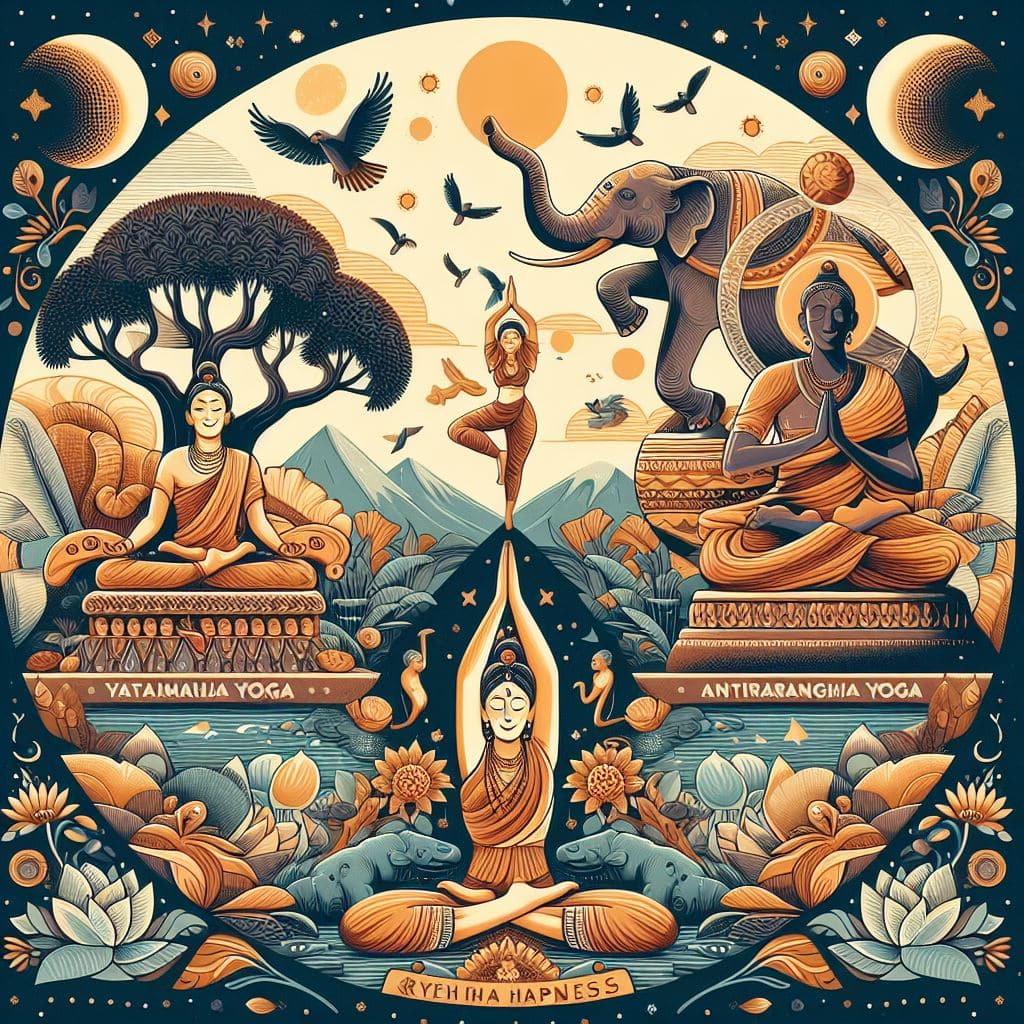
01 Dec 2023
The ancient wisdom encapsulated in Patanjali’s Yoga Sutras illuminates the path toward spiritual enlightenment through the comprehensive system of Ashtanga Yoga, comprising Bahiranga Yoga (external limbs) and Antaranga Yoga (internal limbs). This revered scripture guides practitioners on a transformative journey that encompasses physical, mental, and spiritual realms, all with the overarching goal of attaining unity with the divine.
ॐ अथ योगानुशासनम्॥
“Om. Now, the teachings of yoga.”
These powerful words open the sacred text, marking the beginning of a profound exploration into the essence of yoga. Patanjali’s Ashtanga Yoga, comprising eight limbs, delineates the pathway to self-realization and spiritual elevation. The limbs are divided into two principal categories: Bahiranga Yoga, representing external practices, and Antaranga Yoga, signifying internal practices.
Bahiranga Yoga – बाहिरङ्ग योग:
1. यम (Yama) – Ethical Restraints:
Yama, the foundation of ethical principles, encompasses Ahimsa (non-violence), Satya (truthfulness), Asteya (non-stealing), Brahmacharya (celibacy or moderation), and Aparigraha (non-possessiveness). Practicing these virtues cultivates harmony within oneself and with the world.
2. नियम (Niyama) – Ethical Observances:
Niyama focuses on personal disciplines, including Saucha (cleanliness), Santosha (contentment), Tapas (austerity), Svadhyaya (self-study), and Ishvara Pranidhana (surrender to a higher power). These observances purify the mind and foster self-discipline.
3. आसन (Asana) – Physical Postures:
Asanas, the physical postures, facilitate the harmonization of body and mind. Through mastering various postures, practitioners attain physical strength, flexibility, and stability, preparing the body for deeper meditative practices.
4. प्राणायाम (Pranayama) – Breath Control:
Pranayama involves breath regulation techniques to channel life force energy (prana). By controlling the breath, practitioners balance the mind, enhance vitality, and prepare for meditation.
Antaranga Yoga – अन्तरङ्ग योग:
1. प्रत्याहार (Pratyahara) – Withdrawal of the Senses:
Pratyahara signifies withdrawing the senses from external distractions. This practice turns the focus inward, aiding in concentration and meditation.
2. धारणा (Dharana) – Concentration:
Dharana involves focused concentration on a single point or object. This practice steadies the mind, preparing it for deeper states of meditation.
3. ध्यान (Dhyana) – Meditation:
Dhyana represents the uninterrupted flow of concentration, leading to a state of deep meditation. Here, practitioners experience profound tranquility and inner awareness.
4. समाधि (Samadhi) – State of Enlightenment:
Samadhi, the ultimate goal of yoga, is the state of complete absorption and union with the divine. In this state, one transcends the limitations of the self and experiences unity, bliss, and self-realization.
योगश्चित्तवृत्तिनिरोधः॥
“Yogas chitta vritti nirodhah.”
“Yoga is the cessation of the fluctuations of the mind.”
This sutra encapsulates the essence of yoga, emphasizing the calming of the mind’s fluctuations to attain union with the higher self.
Patanjali’s Yoga Sutras offer a roadmap for seekers to navigate the inner realms and elevate consciousness, guiding them toward a state of profound union, peace, and transcendence. As practitioners embrace these teachings and immerse themselves in the yogic practices, they embark on a transformative journey toward self-discovery and spiritual liberation.
Get more news from us by subscribe your email address.

All Rights Reserved Copyrights 2021 | Powered by onqanet technologies pvt ltd